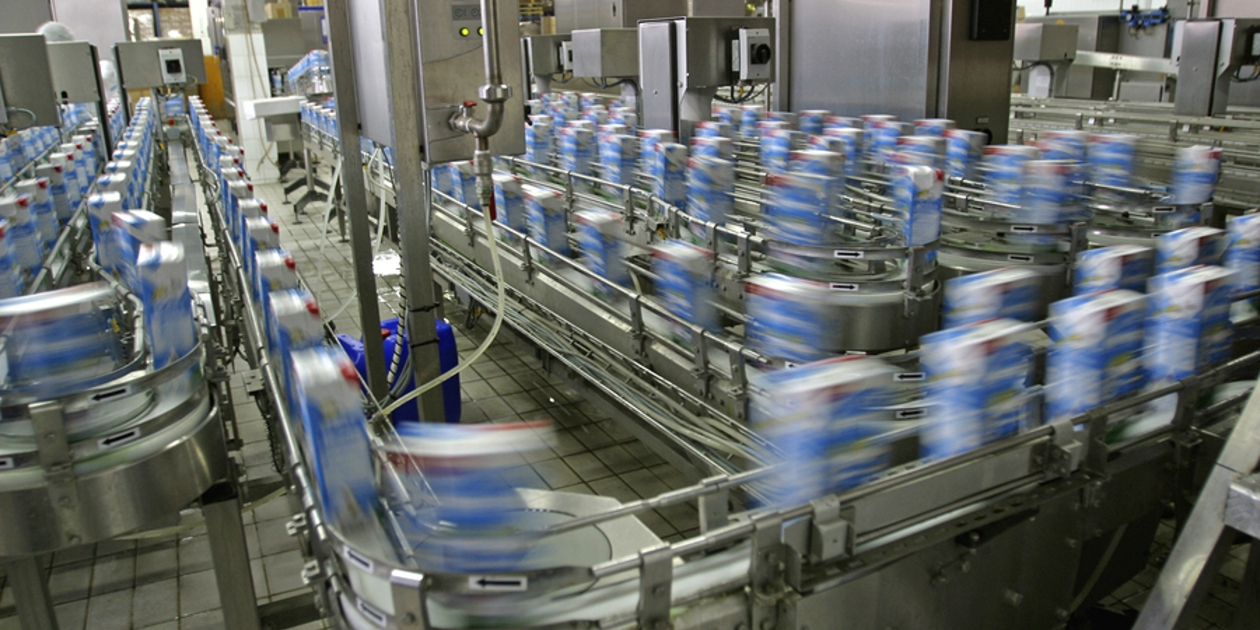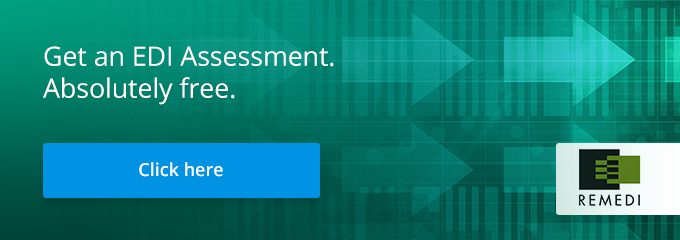
In the coming years, blockchain will play a larger role in the supply chain. The technology brings greater transparency to every level of the supply chain, from suppliers to consumers. However, the question remains for many companies: how do we implement blockchain in supply chain management.
This article explores use cases for blockchain in supply chain management and EDI. Learn how blockchain improves traceability, security, efficiency, and profitability through these use cases.
Use Case Number One: Blockchain Provides Greater Traceability
Where does your coffee come from? In decades past, you would answer, “a plantation in Colombia,” because of countless coffee commercials. Today, you can state the exact location thanks to greater traceability.
The desire for greater traceability partially stems from customers’ demands to know where their food and beverages originate. There is a greater awareness of the effect of agricultural processes on the planet, and many shoppers want to do as little damage to the earth as possible through what they eat and drink. Knowing the origin of their food and beverages is one step in that direction.
Traceability has become a bigger issue in the supply chain because of government regulations. Recalls are a public safety issue, and legislators have written laws that increase the burden upon suppliers in order to protect consumers. Manufacturers need to know exactly where raw materials came from, when items were manufactured, and when they made it to store shelves so that, in the event of a recall, they can quickly and easily take those dangerous products off the market.
This is where blockchain technology comes in. Blockchain works on a system of transparent ledgers, so all parties can see information about a transaction. We’ll illustrate with a real-life example.
Bext Holdings, a Denver-based startup, uses blockchain technology to improve traceability in the coffee industry. The solution, known as bext360, creates a record of where the beans were grown and their purchase price. Ireland’s Moyee Coffee has implemented bext360; the first block in the chain has begun, allowing customers to see real-time payments to farmers in Ethiopia.
Where does blockchain come into play with EDI? EDI solutions hold information about the origin of raw materials and the path a product has woven through the supply chain. Blockchain technology can be integrated with EDI solutions so that this information is recorded in digital ledgers.
Use Case Number Two: Blockchain Provides Greater Security
Another issue within the supply chain is security. Security issues have a variety of causes, but at the end of the day, they all have the same consequences: damage to your reputation and a significant dent in your bottom line.
For food manufacturers, security is paramount. Recalls can be a huge problem for suppliers. They have to pull all products from the shelves until they can pinpoint exactly which product is problematic.
Ensuring security is complicated; there are so many players. There are farmers, processors, distributors, all of whom have to keep their own records. Those systems do not talk to each other, either.
One of the goals of IBM’s blockchain solution is to make the supply chain safer for companies and consumers alike. This goes beyond traceability; IBM and its customers (including retail giant Walmart) want to achieve complete transparency.
If food is not produced safely, it will be contaminated by the time it completes its journey through the supply chain. The risk to consumers is, then, quite high.
Since 2016, Walmart has been working with IBM to apply new levels of traceability to the food supply chain. What does the project look like? Walmart’s partners enter information into digital ledgers regarding the origin and processing of their products.
Earlier in 2018, Walmart completed two pilot projects of distributed ledger technology. After a proof-of-concept, the retail giant now uses the food-tracking blockchain network. By the beginning of October, there were 25 products from ten companies on the blockchain.
What is the relationship between blockchain technology, EDI, and higher levels of security? EDI standards such as GS1 are designed for industries in which product security is paramount. Trading partners can share information quickly and easily based on what products are affected, when an event occurred, where the product was and its current location, and why it was observed.
Using GS1 standards in blockchain ledgers makes it easier for trading partners to learn about which products pose safety risks. With that knowledge, they can quickly pull them from the market to protect consumers.

Use Case Number Three: Blockchain Provides Greater Efficiency
Every link in the supply chain represents a business or an organization, and each of those businesses and organizations wants to be more efficient. The struggle to achieve greater efficiency seems to be never-ending, though blockchain aims to solve that problem.
What are some of the sources of inefficiency? For a start, the number of links in the supply chain can be high. There are shippers, freight forwarders, inland transportation, ports and terminals, and government authorities, and none of them work collaboratively to ensure that information travels quickly and to the correct source. As a result, delays in shipments ensue.
Additionally, there are many manual processes in the supply chain. Manual processes are not only time-consuming, but they are inefficient and rife with errors. Members of the supply chain find themselves wasting time (and money) because of the lack of automation.
TradeLens, a blockchain solution supported by IBM and Maersk, aims to make the supply chain more efficient. The platform enables a predictable, secure exchange of information so that there is greater visibility and processes can be completed faster. Blockchain allows for digitization and automation; previously manual processes such as import and export clearance are auditable and non-repudiable, so there are no more inefficient arguments over mistakes on paperwork.
The TradeLens ecosystem consists of every link in the supply chain, and the platform creates a singular view to eradicate blind spots that keep processes from moving to completion in a timely fashion. Data silos do not have to exist anymore, so people can get the information they need when they need it.
Use Case Number Four: Blockchain Yields Higher Profitability
Every company struggles with increasing profitability. Profitability is intrinsically linked to efficiency, yet so many companies still utilize manual processes, which are notoriously inefficient and costly.
Some technological solutions, designed to increase profitability, can actually lead to higher costs. For example, any major logistics EDI gateway will charge $5 to $7 per transaction, and a freight payment and audit provider can run as much as $10 or more per invoice.
Mirroring, a supply chain administrative procedure, adds costs, too. The term comes from the situation in which a bill of lading or invoice is simultaneously in the hands of a shipper, a receiver, a customer, and other links in the supply chain. Mirroring generates duplication of these documents, creating costly inefficiencies.
Blockchain technology can eliminate the costs of mirroring to boost your profits. The technology is based on the idea of a master ledger. All parties in the supply chain can see a single version of information, in near-real time.
The benefit of blockchain ledgers is that they can be designed to be tamper-proof. Parties cannot update or falsify a ledger entry after it has been written. Only parties writing valid transactions to the ledger can update it, and the ledger can verify that trading partners are who they say they are. Dual-key public encryption ensures that only authorized parties can read entries.
Blockchain increases profitability because it reduces the expense of added administrative costs. You no longer need to track documents throughout the supply chain or generate duplicate documents (hard copy or digital) to ensure that all trading partners have the documents they need.
Here is an example of what an order placed through the blockchain ledger system would look like. The buyer sends a supplier their actual level of inventory consumption that is set against a pre-determined service-level agreement. Then, the supplier ships the product and sends an invoice, which the customer pays. There is no more complicated confirmation-shipment-receipt process.
The Bottom Line on Blockchain and EDI
The use of blockchain in supply chain management has the power to transform the supply chain into a lean, efficient, cost-effective process. Although it is an emerging technology, many companies today are making use of it. You do not have to give up on your current investments in EDI, either; blockchain can complement it.
Ready to learn more about streamlining your EDI processes? Get an EDI Assessment. Absolutely free.






